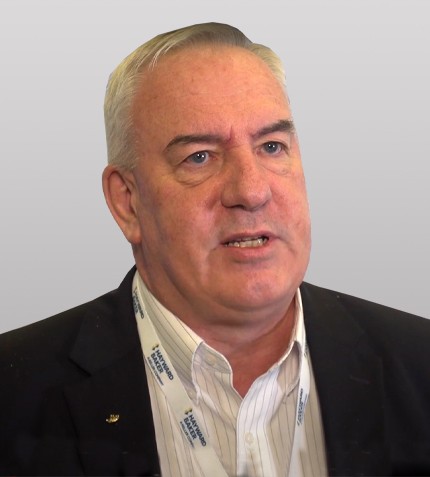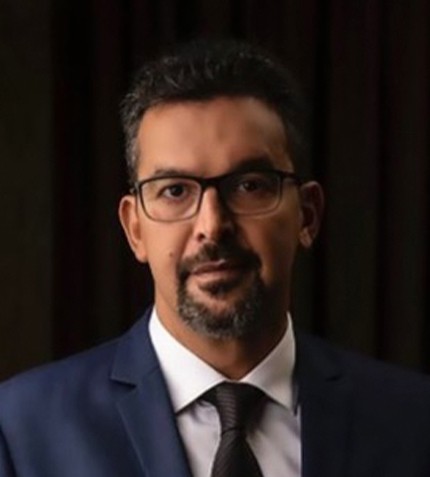
“The executives that say, ‘this is a pace of change we are not comfortable with,’ have to be replaced with those that know that transformation is not comfortable and will be difficult… and exhilarating... and essential.”
Doug Morrison
PRESIDENT & CEO, CENTRE FOR EXCELLENCE IN MINING INNOVATION (CEMI)
What are some current highlights and future plans for the Mining Innovation Commercialization Accelerator (MICA) network?
The MICA Network focuses on the pace at which we accelerate innovations by drawing in multidisciplinary innovators from any sector to find solutions that benefit the mining industry. This is one of the most significant things that the Canadian government has done for the mining sector in many decades. We have expanded the network for the past two years and already have well over 250 companies that want to join. After we launched on November 17th, 2021, we saw the membership grow rapidly, and it will expand again as we begin to accept innovators from beyond Canada later this year. We prefer to work with the SMEs because they represent the most innovative companies in every economic sector.
The greatest overall project for the industry has to be the development and implementation of autonomous systems which are designed to operate without people and be energy efficient. Making that change to the cost of production allows us to reduce the cut-off grades in mining operations, which means that some mineralization that is currently not viable to mine will become feasible. We have to dramatically increase the amount of metals that we produce, as well as reduce the cost of those metals if we are to begin the shift to a low carbon economy by 2035. Electric cars take five times more copper than gas/diesel cars. That does not include the grid that you need to transfer the energy to charge the systems, plus all the other metals required to for batteries to power those vehicles. Saying we have to open new mines is too simplistic – a new deposit discovered tomorrow will not produce ore before 2035. The only way to accelerate metal production before then is to make existing mines far more productive than they are today - with massive investment in the disruptive innovation of ore production. There is no time to waste.
What red flags must the sector bear in mind when transitioning to Industry 4.0 technologies?
The biggest red flag is that unlike manufacturing, which went through industry 3.0 some 20-30 years ago with the mechanisation of equipment systems, then automation and robotics, the mining sector has not completed industry 3.0. The Industry has been very slow to move into automation and robotics, and almost no mines have the kind of sophisticated supply chain management systems other industries have. Robotics and automation provide a great deal of real-time data in order to use artificial intelligence, but mining operations currently do not have the information base needed to enter that space. Transitioning into new technologies will take visionary investors and executives. Internal barriers within mining generate opportunities for disruptors from other industrial sectors to make those changes. Tesla are becoming directly involved in mining because they do not see the industry shifting fast enough to meet their needs.
How can the mining sector meet increased demand as we move towards electrification?
We have the technologies to shift production to autonomous systems. Communication technologies in underground mines have often been the reason for the lack of progress given cables running on the ground, which get cut off by machines. But the quality of wireless communication is very reliable and using communication drones will extend the range and cover any gaps that arise. The benefit that we have from the metal and mineral industry is that the metals and minerals we produce have a very high recycle ratio. For example, solar panels may well have to be replaced, but the materials in them will be reprocessed and have another life. The material moves into the scrap metal system to has a second and third life as is recycled. Hardly any of these minerals and metals are wasted and almost all of it actually comes back into the economy. But in order to make the Green Transition happen in the next 10-20 years, we have to produce a great deal more metal by 2035 – and we still need many new mineral deposits to sustain the transition beyond 2050.
Why is ‘innovation for mining’ paramount to the world today?
The metal mining industry is increasing its capacity just over 1% every year, but electrification will require seven times greater growth by 2040. The mining industry of today cannot achieve that level of growth without rapid implementation of continuous, autonomous ore production systems designed to process more ore and less rock. It is very convenient for investors right now to be reaping the rewards of higher metal prices, but this is short-term profitability. We hear mining executives that have invested nothing to improve environmental performance in the last 20 years now asking for environmental regulations to be relaxed - when we see the number of tailings dam failures increasing, and the human financial implications of those failures becoming extremely serious. As climate change progresses, we will see more damage to infrastructure through extreme weather events and that will affect global supply chains.
All the plans in the transportation, infrastructure and manufacturing sectors of the economy come to nothing if the mining industry cannot provide the volume of raw materials they require to innovate. We use gas and diesel cars because they are less expensive than electric. More expensive copper and nickel makes electric cars more expensive, which is not going to drive the transition to an electric economy. That is the fundamental crux that we have to get beyond. At CEMI we have started to use the phrase: “innovation for mining,” which is the integration of sectors to help improve mining. The executives that say, ‘this is a pace of change we are not comfortable with,’ have to be replaced with those that know that transformation is not comfortable and will be difficult… and exhilarating... and essential. This is the Challenge of our Age and if we are not successful the planet will melt and burn and drown, so at CEMI we believe this is the most important thing that we can do in the world today.










